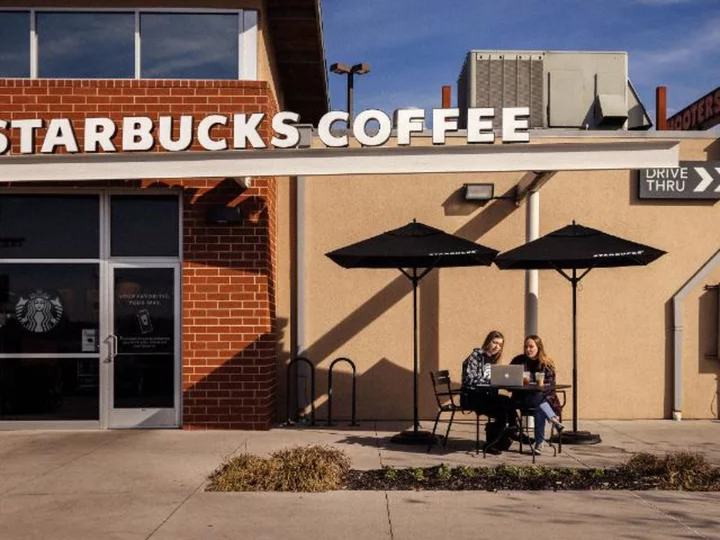"One tall iced pumpkin cream chai tea latte please," is an order that will soon become a staple at Starbucks stores across the country.
As we enter the holiday drink season, lengthy Starbucks orders with brand-specific vocabulary will soon be gracing our ears as we sip our 7 a.m. cup of joe. The classic "small black coffee" is an order reserved for other coffee shops. But it wasn't always that way.
When Starbucks was first founded in 1971, customers would walk in and ask for coffee beans: no modifications or refreshers. At the time, coffee sales were actually in decline, according to Charles Lindsey, a marketing professor at the University at Buffalo.
"Coffee was just seen as a drink that you have for breakfast," Lindsey said. "Then Starbucks came in and they flipped the model."
Everything changed when Howard Schultz joined the company in 1982 as the director of operations and marketing. The next year, he traveled to Italy where he became "captivated" by Italian coffee bars and was inspired to bring the coffeehouse culture to the United States through Starbucks, said Megan Adams, a spokesperson for the company.
A few years after returning to the United States, Schultz left Starbucks to found a new coffee company, Il Giornale, inspired by Italian coffeehouses.
The shop featured a menu with the "Starbucks language" customers are familiar with today, including drinks such as espressos and lattes. After a few years of running Il Giornale, Schultz acquired Starbucks and operated under the Starbucks name, while maintaining the Italian-style Il Giornale menu.
"If you like a good macchiato or cortado or latte or cappuccino, Starbucks really helped to popularize those drinks," said Lindsey.
Along with the new drinks came the sizing we are so familiar with: "short," "tall," "venti," "grande," and "trenta." Venti and trenta in Italian mean "twenty" and "thirty," respectively, which refer to the number of ounces in each drink. Grande means "large" in Italian. Short and tall are other terms associated with the Italian coffee bar concept, used to describe the size of the drink. Tall was initially a medium-sized drink until Schultz decided the menu was too crowded. Short was eliminated and only available for hot drinks upon request. Now tall is known as the smallest size.
Then came the other component of creating the coffeehouse feel, the social component, which took form in the personalization of each drink order. This includes a customer's name written in marker on each cup and the order in which a customer states their drink preferences, such as temperature, size and other modifications.
"Our customers love coming to Starbucks because they can get that perfect drink. They can get a drink made exactly how they want it and customized in a way that is perfect to their preferences," said Adams.
However, not everyone has embraced the Starbucks language. Even today, many customers have expressed frustration with the sizing system, taking to X, the social media platform formerly known as Twitter, to share their complaints.
"Short is small but Tall is medium. Has anyone figured out the sizing at Starbucks?" one user posted. "I refuse to use Starbucks sizing. It's just not for me," read another post.
Despite some pushback, there is no denying the impact that the language has had on the brand's perception.
"The language was new and different and set them apart from the competition in a new vibrant and fresh way," said Lindsey.
While other brands can try to copy Starbucks' language and model, Lindsey said, it is hard for them to find success because consumers now mentally attach the sizing and drink types to Starbucks. The language has become ingrained in consumers' minds as a Starbucks staple.
"If you surveyed 1,000 consumers and asked, 'What brand do you think of when I say cappuccino or latte?' I think Starbucks would come to the minds of most US consumers," Lindsey said.
This is a branding technique consumers encounter often.
Lindsey cited sliced bread as an example. While many associate and credit Wonder Bread with sliced bread, he said, the inventor of sliced bread is actually a man from Iowa, who predated Wonder. Wonder simply did a better job of advertising.
Using a similar tactic, Starbucks has seen great success, bringing in $32.3 billion in net revenue last year alone. Additionally, the coffee chain currently has more than 35,000 stores worldwide, according to its earnings report.
The marketing of the brand, which includes the unique language and the "authentic coffeehouse culture," is a large driver of the chain's success, Lindsey explains.
As the world enters into Pumpkin Spice Latte season, customers should brace themselves for more requests of "tall iced pumpkin cream chai tea lattes." At least for now, Starbucks' language is here to stay.

